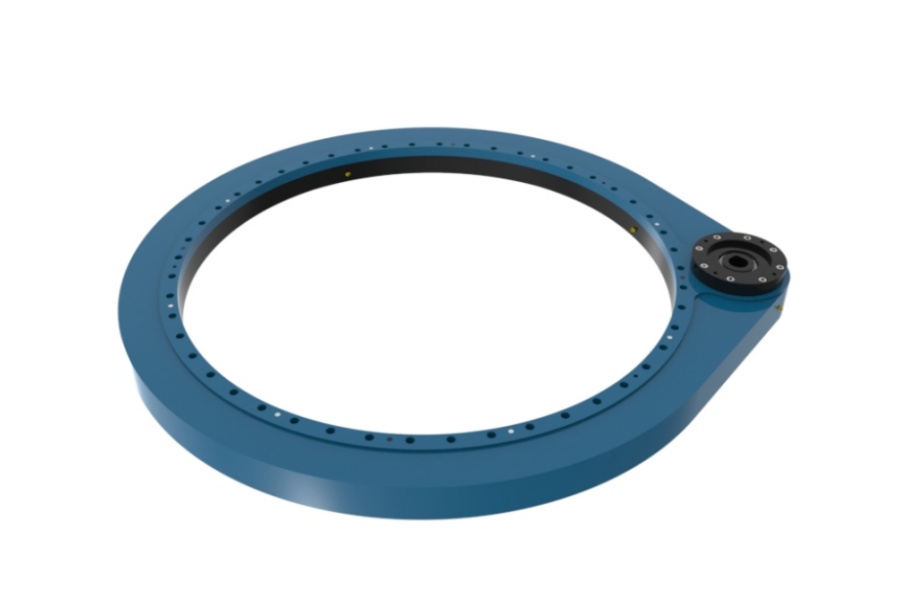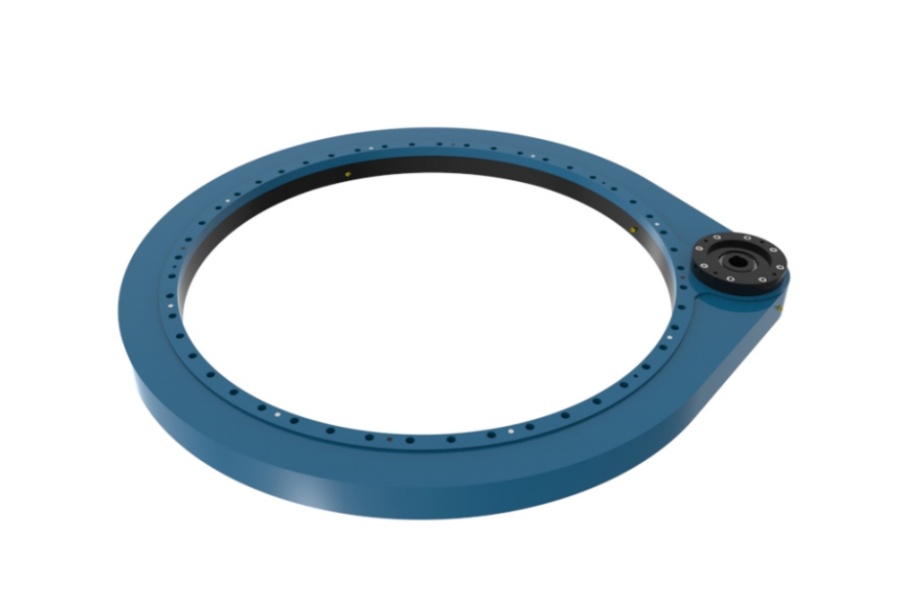
Slew Drive Product Packaging Methods
What is Slew Drive
Slew Drive represents an integrated power transmission system that combines a slewing bearing with a worm gear or other drive mechanism to facilitate controlled rotational movement under substantial loads. This sophisticated assembly is engineered to handle simultaneous axial, radial, and moment loads while converting input power from hydraulic or electric motors into precise output rotation. The compact design incorporates all necessary components within a sealed housing, providing structural integrity and space efficiency that cannot be achieved with separate systems. Proper manufacturing, lubrication, and protection are essential for maintaining performance characteristics throughout the product's lifecycle, with packaging serving as the critical final step in preserving quality between factory production and end-user installation.

How Slew Drive Products Are Packaged
The packaging process for slew drives is a meticulously designed procedure that ensures these precision components arrive at their destination in perfect condition, regardless of transportation distance or environmental conditions encountered during transit.
The packaging protocol begins with a thorough cleaning process for each component after passing quality inspection. Every part undergoes meticulous cleaning to remove surface contaminants, particles, and manufacturing residues that could compromise performance. Following assembly into a complete unit, the slew drive receives lubrication through dedicated grease fittings to ensure internal components are properly protected. The fully assembled unit then undergoes a final quality verification before receiving another comprehensive exterior cleaning to guarantee absolute cleanliness before packaging.
The next phase involves robust corrosion protection measures. Each cleaned slew drive receives application of high-quality anti-rust oil, particularly focusing on exposed bearing surfaces and critical components susceptible to oxidation. For enhanced protection, the drive housing often receives specialized paint coatings or surface treatments that provide additional corrosion resistance. Following anti-rust treatment, the entire unit is carefully wrapped in protective plastic film, creating an effective barrier against atmospheric moisture and environmental contaminants that could cause deterioration during storage or transportation.
The final packaging stage employs custom-engineered wooden crates constructed from durable plywood materials that meet international export standards. The packaging system begins with a base layer of protective polyethylene foam padding that prevents scratching or surface damage. The slew drive is then precisely positioned within the crate, with additional foam barriers placed on all sides to create a complete cushioning system that prevents movement during transit. For multiple-unit shipments, specialized wooden separators are positioned between individual drives to prevent contact and potential impact damage. The packaging process concludes with a top layer of foam protection beneath the crate lid, followed by secure fastening with heavy-duty nails and reinforced steel strapping for maximum security throughout the logistics chain.
Characteristics of Slew Drive
Slew drives possess distinctive characteristics that make them indispensable for heavy-duty rotational applications across numerous industries. Their most notable feature is their integrated design philosophy, which combines multiple functional components into a single compact unit, providing significant space savings and structural simplicity compared to traditional separate systems. These drives deliver exceptional load-handling capability, simultaneously managing complex load combinations including axial forces, radial loads, and moment loads through robust construction and precision-engineered components. The self-locking capability inherent in many worm gear designs provides built-in safety by preventing back-driving and maintaining position stability without additional braking systems. Slew drives offer precise positional control, enabling accurate rotational positioning and smooth movement even under substantial load conditions, typically achieving positioning accuracy within minute ranges. Their durability is enhanced through the use of high-strength alloy steels, advanced heat treatment processes, and protective sealing systems that ensure reliable performance in demanding environments ranging from extreme temperatures to corrosive conditions. The modular design approach facilitates easier installation and maintenance, with standardized mounting interfaces and accessible service points that simplify integration and upkeep while reducing total cost of ownership.
Applications of Slew Drive
The unique combination of strength, precision, and compactness enables slew drives to serve critical functions across numerous industrial sectors and applications. In renewable energy applications, they form the core component of solar tracking systems, precisely orienting photovoltaic panels to maximize energy capture throughout the day, while also serving in wind turbines for pitch and yaw control mechanisms that optimize performance and protect against extreme weather conditions. Construction equipment extensively utilizes slew drives in excavators, cranes, and aerial work platforms, where they provide the rotational capability for booms, platforms, and lifting mechanisms that require smooth operation under variable loads. Material handling equipment incorporates these drives in rotary conveyors, stackers, and manipulators that require controlled rotation with precise positioning capabilities. Industrial automation systems employ slew drives in robotic welding cells, indexing tables, and automated assembly lines where accurate rotational positioning is essential for manufacturing precision. The aerospace and defense sectors utilize them in radar systems, satellite communication antennas, and weapon platforms that require accurate positioning and stability under demanding operational conditions. Even medical equipment manufacturers incorporate precision slew drives in advanced imaging systems like CT and MRI scanners where smooth, reliable rotation is critical for diagnostic accuracy. Additional applications include mining equipment, marine deck machinery, agricultural implements, and telescope positioning systems, demonstrating the remarkable versatility of these components across virtually every sector requiring controlled rotational movement under load.
Factors Influencing the Price of Slew Drive
The cost structure of slew drives is determined by numerous technical and commercial factors that reflect their engineering complexity and performance capabilities. The primary cost driver is the physical size and load capacity rating, with larger units designed for higher loads commanding significantly higher prices due to increased material requirements, more complex manufacturing processes, and enhanced quality control measures. The selection of materials represents another significant factor, with high-grade alloy steels, specialized coatings, and advanced heat treatment processes adding substantial value while increasing manufacturing expenses related to material procurement and processing. Manufacturing precision constitutes a major cost component, as precision-ground gear teeth, honed bearing surfaces, and exacting tolerance control require advanced machinery, skilled labor, and extensive quality verification procedures, all contributing to higher production costs. The type and complexity of the drive mechanism influence price, with standard worm gear configurations generally representing the most economical option, while planetary or hybrid systems offering higher efficiency or special capabilities command premium pricing. Additional features such as integrated motors, brakes, sensors, or special sealing systems designed for extreme environments add functionality but also increase the overall cost through additional components and assembly complexity. Certification requirements including ISO standards, industry-specific qualifications, and third-party verification processes contribute to the total cost through testing and documentation expenses. Finally, brand reputation, warranty coverage, after-sales support services, and order volume considerations contribute to the total cost of ownership, with established manufacturers typically commanding premium prices based on proven reliability and comprehensive technical support offerings.
Supplier of Slew Drive
LYRADRIVE represents a leading manufacturer and global supplier of high-performance slew drive solutions, offering comprehensive rotational drive systems that meet rigorous application requirements across various industries. The company maintains an unwavering commitment to quality through advanced manufacturing processes, stringent quality control measures, and continuous product development initiatives. Their product portfolio encompasses both standard and customized solutions designed to address specific load capacity, environmental condition, and integration requirements, supported by extensive technical expertise and engineering consultation services. LYRADRIVE's packaging standards reflect their overall quality philosophy, ensuring every product reaches customers in perfect condition regardless of destination or transportation method. By focusing on reliability, performance, and customer satisfaction, LYRADRIVE has established itself as a trusted partner for businesses that depend on precision rotational drive technology, offering competitive solutions that balance performance characteristics with total cost of ownership considerations.



